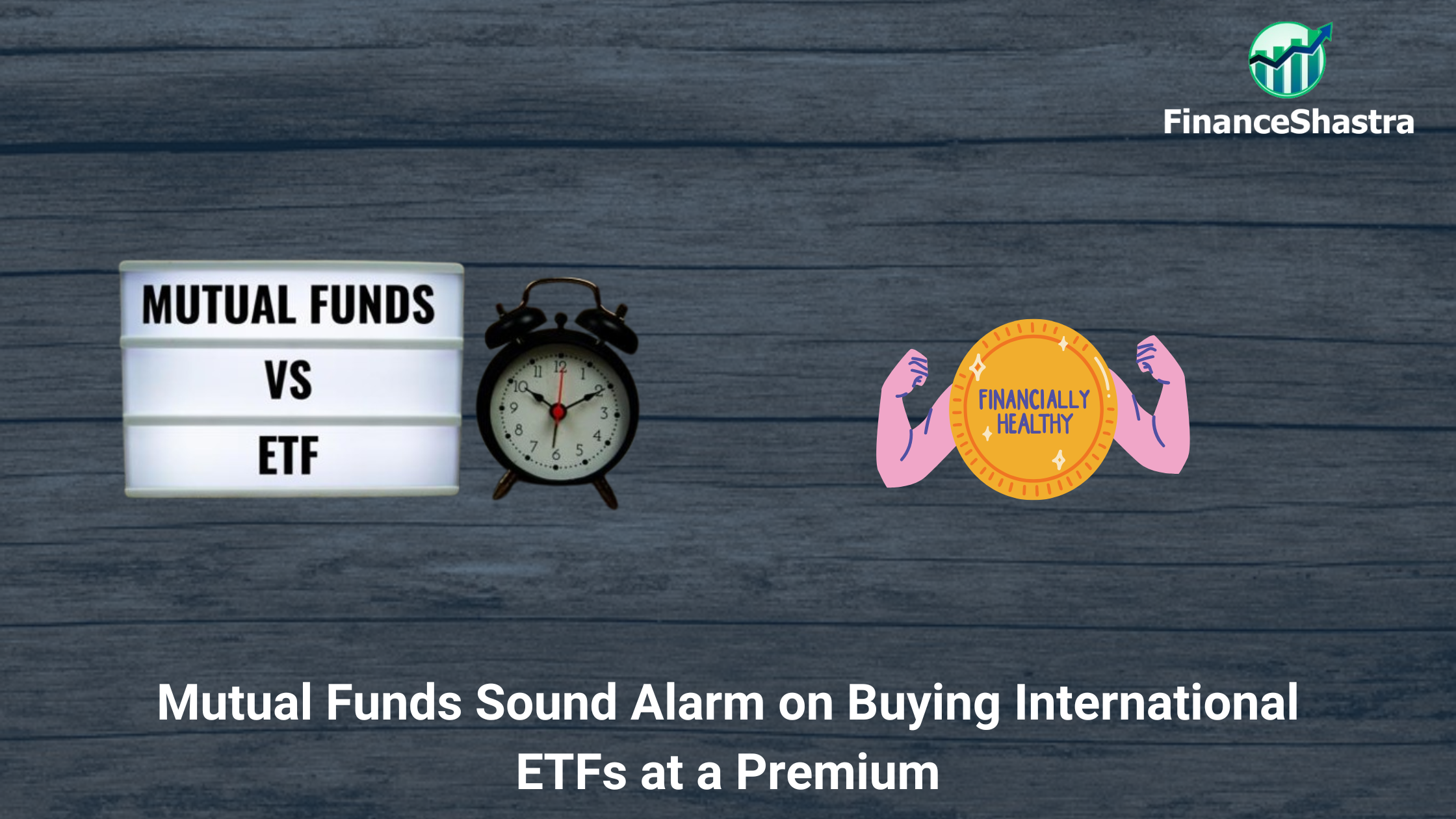Mutual Funds Sound Alarm on Buying International ETFs at a Premium
Fund houses and wealth managers are raising concerns about the rising trend of investors purchasing international exchange-traded funds (ETFs) trading at significant premiums to their net asset value (NAV). The caution comes amidst a surge in interest among Indian investors seeking exposure to global markets, particularly the U.S., following Donald Trump’s recent victory in the U.S. Presidential election.
International ETFs, designed to provide investors with access to foreign markets, are seeing a mismatch in demand and supply due to regulatory restrictions on the creation of new units. This imbalance has caused many ETFs, especially those tracking U.S. markets, to trade at premiums well above their NAVs. Experts warn that such buying behaviour could lead to disappointing returns when the premium diminishes, and the ETF’s market price aligns with its underlying NAV.
What Are ETFs, and Why the Premium?
ETFs are passively managed investment instruments that track indices, commodities, or baskets of securities, offering low expense ratios compared to mutual funds. They are traded on exchanges like stocks, allowing investors to enter or exit positions throughout the trading day. Fund houses typically appoint market makers to provide liquidity, and large investors can approach fund houses for unit creation or redemption.
However, a demand-supply mismatch has emerged due to regulatory limitations on fresh unit creation in international ETFs. This has led to existing units being in short supply, driving up their prices on exchanges relative to their NAV.
Industry Experts Weigh In
Prateek Bhardwaj (hypothetical name), an experienced wealth manager, explained the risk:
“Investors need to understand that paying a premium over NAV is essentially overpaying for the asset’s intrinsic value. When the market price converges with the NAV, it could result in losses or reduced returns. This is particularly risky for investors eyeing short-term gains.”
Another mutual fund executive noted, “The current premiums are a result of pent-up demand for global diversification, especially in the U.S. market, where optimism has risen post-election. However, without new units being created to meet this demand, the price distortion will persist.”
The Risks of Buying at a Premium
Purchasing ETFs at a premium means that investors are essentially paying more for the same value of underlying assets. Over time, as supply stabilizes or investor interest wanes, the ETF’s market price may decline to align with the NAV. This convergence can erode investor returns, particularly for those who bought during periods of inflated demand.
What Should Investors Do?
Wealth managers and fund houses recommend a cautious approach:
- Monitor NAV and Market Price: Investors should ensure that they are not overpaying for ETFs by comparing the market price with the NAV before making a purchase.
- Evaluate Long-Term Goals: International ETFs are best suited for long-term diversification. Short-term investments, especially during periods of price premiums, could result in suboptimal returns.
- Be Patient: Experts suggest waiting for market corrections or fresh unit creations to stabilize prices, reducing the risk of buying at inflated levels.
- Seek Professional Advice: Investors uncertain about their strategies should consult financial advisors to assess the suitability of international ETFs for their portfolios.
Why the Renewed Interest in U.S. ETFs?
The U.S. market has attracted renewed attention from Indian investors due to its robust economic performance, diversification benefits, and perceived growth potential following the recent political changes. ETFs tracking major U.S. indices, such as the S&P 500 or Nasdaq-100, are seen as effective vehicles for accessing these opportunities.
However, experts emphasize that such investments require due diligence. While the demand for global diversification is a positive trend, overpaying for these instruments during times of supply constraints could undermine the very benefits they offer.
Conclusion
International ETFs offer a valuable opportunity for Indian investors to diversify their portfolios and gain exposure to global markets. However, the current scenario of ETFs trading at a premium to NAV calls for restraint. Investors must prioritize research and avoid impulsive decisions driven by market trends. By focusing on long-term strategies and understanding the dynamics of ETF pricing, investors can maximize their returns while minimizing unnecessary risks.

